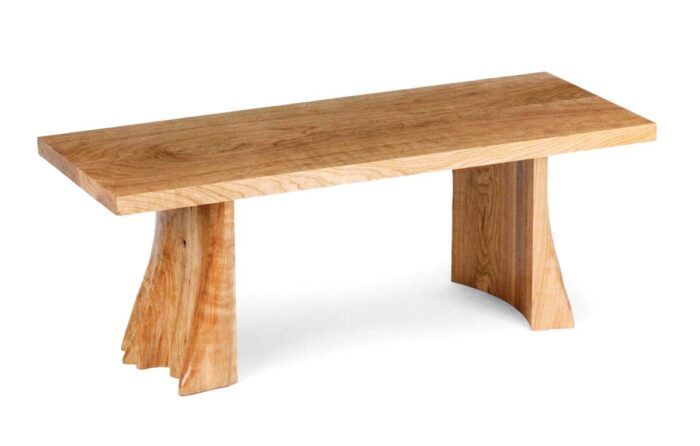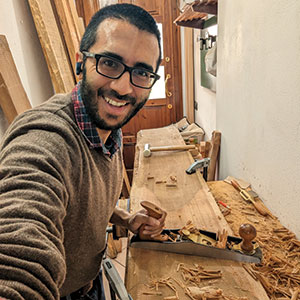From tree to table
A log left behind after a number of cherry trees were felled to make room for new homes catches the eye of Stephen Tuttle while he is out for a bike ride.
On a beautiful fall afternoon my daughter and I are riding bikes over smooth, newly paved roads; there is little traffic as we pass by fields, seeing a few new houses and many lots for sale. Some cherry trees that had stood for over a century on the perimeter of what was a farmer’s field have recently been felled. They have been hauled off, but I spot a large log lying in the weeds. It is 2 ft. wide at the base but curves to a wider crotch; perhaps that is the reason it was left behind. But this is a promising log. A little part of me regrets finding it, though, knowing the work it represents if I get my wish. But the part of me that feels just riding by would be a waste acts, and when we get home I make the call. I meet the owner on site, and he agrees to let me have the log for the hauling.
I arrive the next day with my chainsaw mill: a 10-ft. aluminum channel guide bar, a small chainsaw, plenty of fuel and bar oil, and the usual chainsaw paraphernalia. I start by cutting 30 in. off the butt end to eliminate some of the curve. The rest of the log is 5-1/2 feet long. After removing the bark, I get sawing and mill the log into 2-in. planks. With my rig cutting nearly to its full 24-in. capacity, it is slow going. I refuel after each board and resharpen after two. I’m excited, though. The figure is beautiful, and the crotch does not have the bark-lined crack down the middle that is prevalent in cherry.
This is hard work to do alone. The boards, heavy with water, are too much for my weak back to lift. I walk them or lift just one end at a time to get them into my small truck. At home I apply a sealant to the end grain of all the pieces to retard the drying and sticker the planks with the rest of my stash. They will lie under old metal roofing for many seasons. The day is spent and so am I. Reeking of chainsaw exhaust and certain there is sawdust in all my pores, I’m nevertheless glad I made the effort.
On a quiet winter evening two years later I get an idea for a coffee table design, and I remember those cherry planks. Within a day or two I’ve brought them into my shop, where they stand for the next month. I frequently stop and stare at them, turning them, standing different pairs together, wondering at their best use. Flaws have developed during the drying: a deep crack on one side of the crotch, a loose knot near the middle. Should I choose the best board for the table top and live with its imperfections, or saw clear wood from two planks and make a book-matched top? I finally decide on the latter and once again set steel teeth to the wood. A bandsaw follows a snapped chalkline to remove bark edges, and a circular saw cuts boards to length. Then I fire up the planer and plane boards to thickness.
With the surfaces cleaned up I stand the two 10-in.-wide boards next to each other and wonder if my initial choice was wrong. That fabulous crotch figure is so concentrated at one end that it looks odd, out of balance. Reluctantly, I decide to eliminate the crotch wood and use just the straight-grained section. I know this is the right choice, but it is such a far cry from my original vision that my enthusiasm for the project wanes.
But my idea for the base carries me on. For this I was hoping to express the transition from a tree’s natural form to a machined one. Over several days at the jointer, table saw, chopsaw, and biscuit joiner, I make two large leg blanks, each one glued up from 10 pieces 16 in. long. I carve the outer surfaces with an array of gouges and mill the concave inner surface with a router in a shop-made jig.
Each step, from chainsawing to sandpapering, makes this rough material a little smoother, a little more refined, a little closer to an idea. I sand the entire thing for several days and finally apply a finish. It is so smooth it begs to be caressed. The swirling figure speaks of a living thing.
At times woodworking is such noisy, hazardous, almost violent work that when a project is finished, when it finally comes to rest like this table before me, I imagine the tree letting out a long sigh of relief as it settles into its reincarnation. I love this stuff.
Stephen Tuttle shapes trees in Warriors Mark, Pa.

















Comments
Very nice, indeed!
Good to me.
Log in or create an account to post a comment.
Sign up Log in